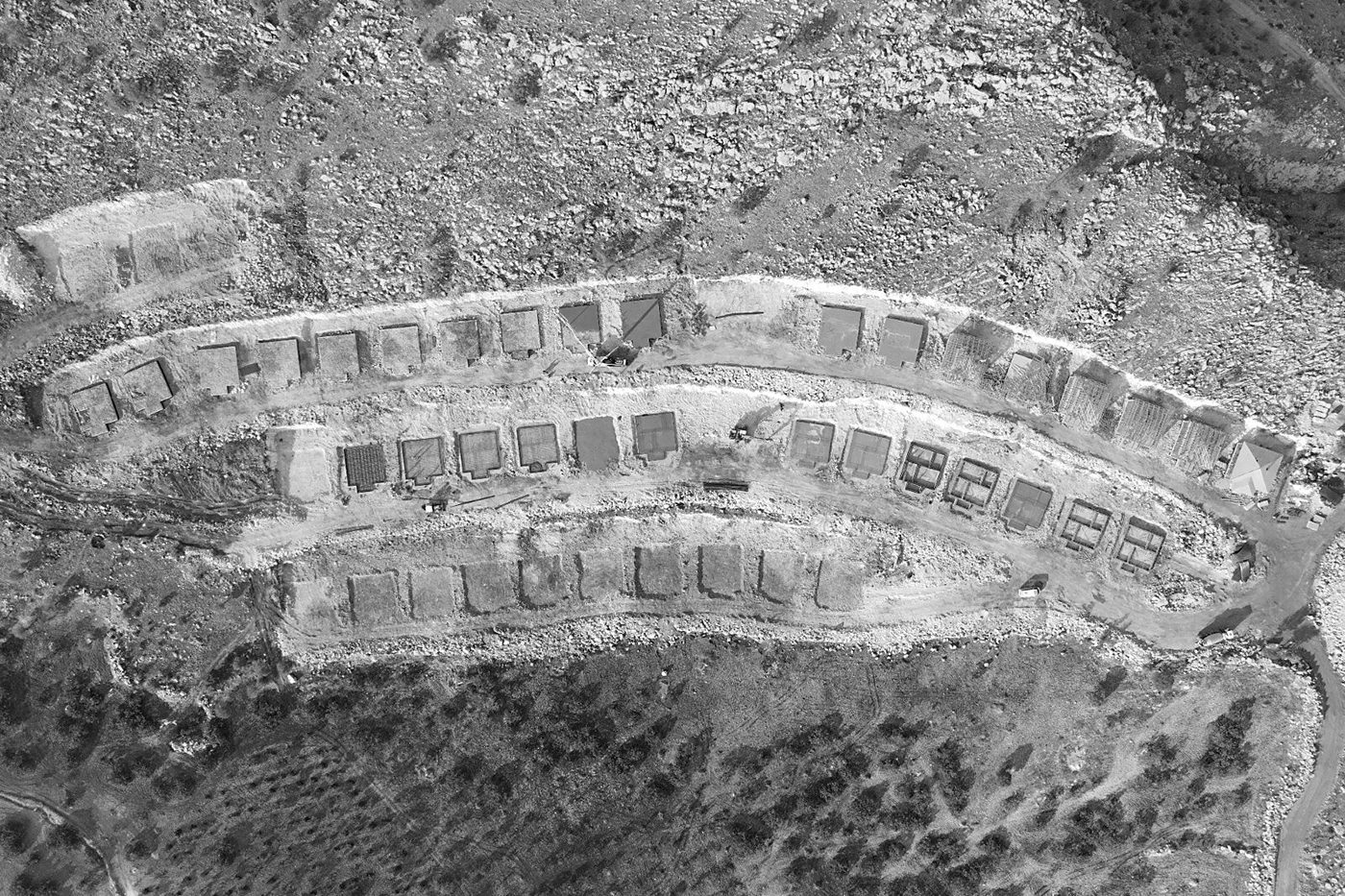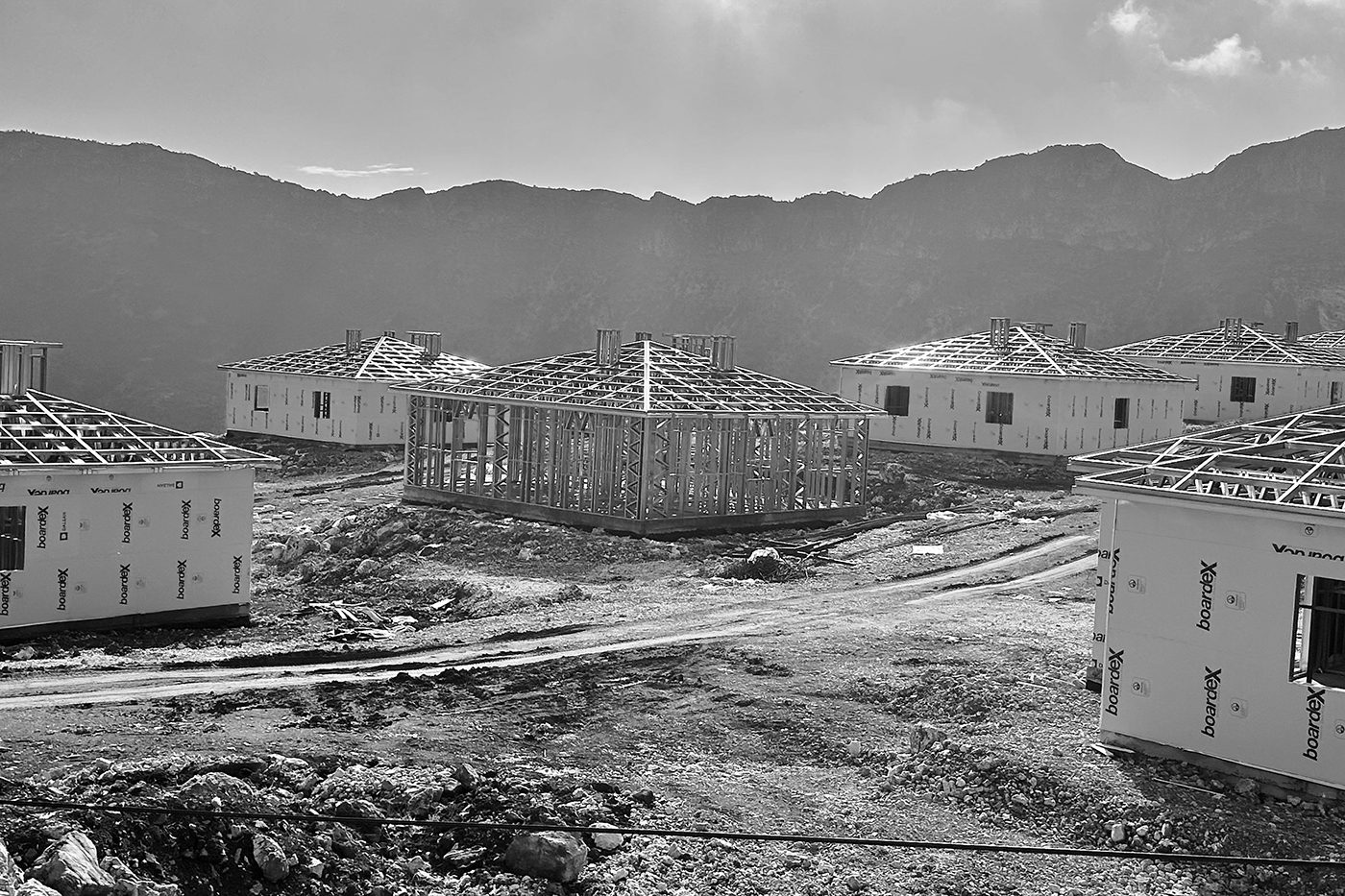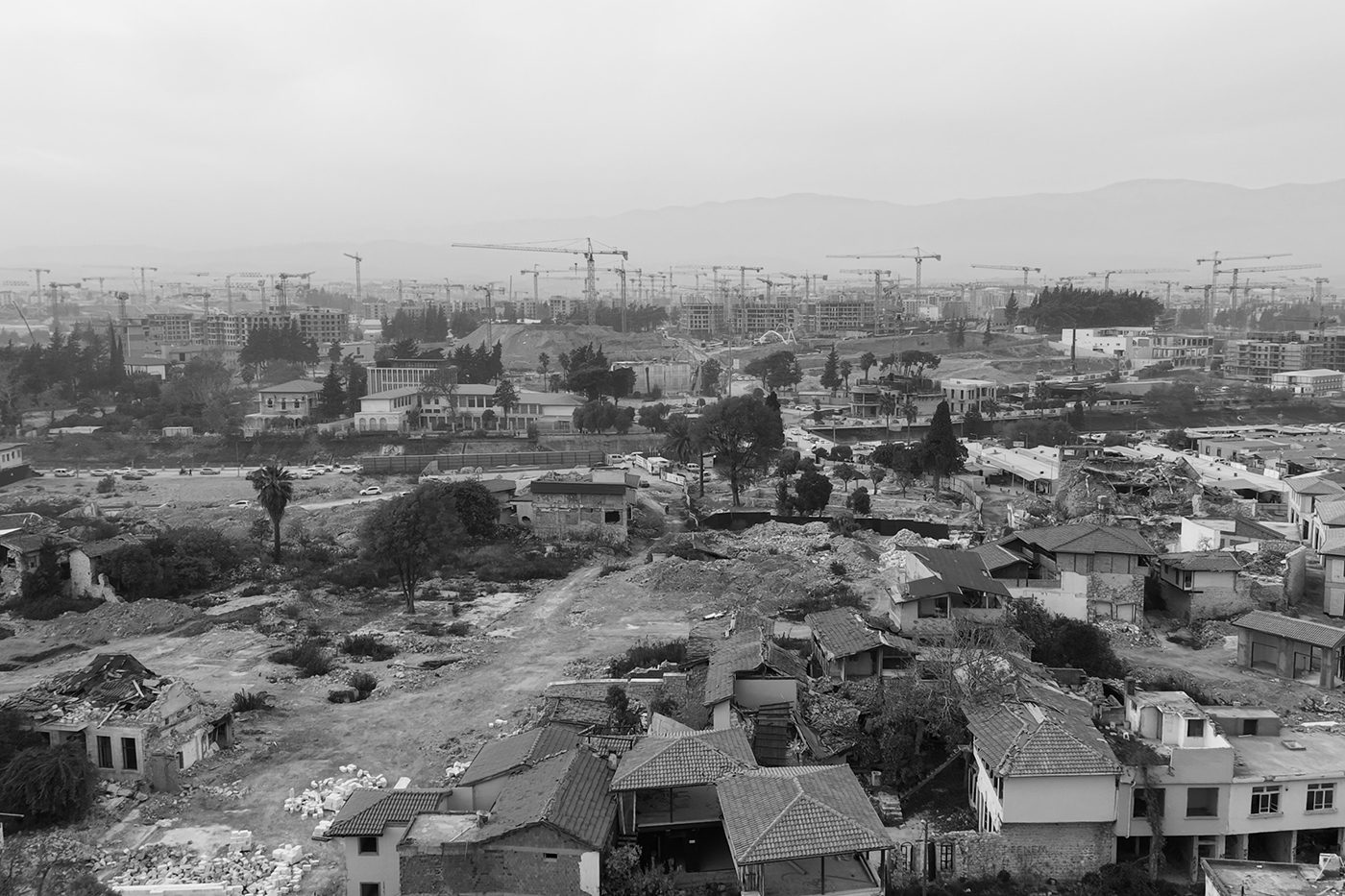Project development: Türkiye
The title "Design for Disaster" is borrowed from a video about the Los Angeles fires. As early as the 1960s, wildfires shaped the city—then seen as exceptions. Today, the scenario repeats itself with alarming regularity. Disaster no longer appears as an interruption, but as a cyclical pattern inscribed in urban life. "Design for Disaster" addresses this dual horizon: the history of catastrophe and reconstruction on the one hand, and the question of architecture in a permanent state of emergency on the other.
The 2020 and 2023 earthquakes in Turkey and Syria revealed a paradox. Millions lost their homes—yet it wasn't until three years later that aluminum shelters appeared on a large scale. At the same time, high-rise districts sprang up at record speed—not for survivors, but as speculative real estate projects. Disaster thus becomes a driver of capital.
The 1:20 model presented at the Biennale reflects this contradiction. Lightweight, fire- and earthquake-resistant, these houses promise quick solutions, but in practice they remain belated, temporary, and precarious. Paul Virilio called this the politics of accident: "With every invention, we also invent its accident." The shelter is both a space of protection and a symbol of fragility—a structure haunted by the very catastrophe it seeks to resist.
Virilio's insight resonates with Giorgio Agamben's thesis that the state of exception has become the rule. In Turkey, this is evident in the late displacement: shelters are provided only when provisionality itself becomes permanent. Peter Sloterdijk's cultural philosophy of emergency describes societies as vulnerable immune systems. Architecture becomes an immune apparatus—but immunity is unevenly distributed: towers emerge, survivors remain in camps. Martina Löw's relational theory of space emphasizes that space is never neutral, but socially produced. These houses are not neutral shelters, but crystallizations of geographies of crisis.
From Anatolia to Los Angeles, the pattern repeats itself: accelerated reconstruction here, delayed relief there. Disaster is no longer exceptional, but—as Virilio wrote—the hidden face of progress.
"Design for Disaster" stages this ambivalence. The skeletal model is not a solution, but a question: can resilience be designed—or are we merely building monuments to the accident?




